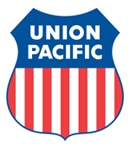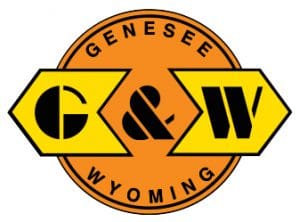4th Quarter 2019
Net Earnings: Increased 4% to $1.42 billion from $1.37 billion
Earnings Per Share: n/a – BNSF is not publicly traded
Revenue: Decreased 6% to $5.84 billion from $6.21 billion
Operating Income: Increased 2% to $2.11 billion from $2.06 billion
Operating Expenses: Decreased 10% to $3.73 billion from $4.14 billion
Operating Ratio: Improved to 62.8% from 65.6%
2019 Annual Earnings
Net Earnings: Increased 5% to $5.5 billion from $5.2 billion
Earnings Per Share: n/a – BNSF is not publicly traded
Revenue: Decreased 1% to $23.5 billion from $23.9 billion
Operating Income: Increased 3% to $8.1 billion from $7.8 billion
Operating Expenses: Decreased 4% to $15.4 billion from $16.1 billion
Operating Ratio: Improved to 64.5% from 66.2%
Click here to read BNSF’s full earnings report.
4th Quarter 2019
Net Earnings: Decreased 24% to C$873 million from C$1.14 billion
Earnings Per Share: Diluted earnings per share decreased 22% to $1.22 from $1.56
Revenue: Decreased 6% to C$3.6 billion from C$3.8 billion
Operating Income: Decreased 16% to C$1.22 billion from C$1.45 billion
Operating Expenses: Increased to C$2.36 billion from C$2.35 billion
Operating Ratio: Worsened by 4.1 points to 66% from 61.9%
2019 Annual Earnings
Net Earnings: Decreased 3% to C$4.2 billion from C$4.3 billion
Earnings Per Share: Diluted Earnings Per Share decreased 1% to $5.83 from $5.87
Revenue: Increased 4% to C$14.9 billion from C$14.3 billion
Operating Income: Increased 2% to C$4.6 billion from C$5.5 billion
Operating Expenses: Increased from C$8.8 billion to C$9.3 billion
Operating Ratio: Worsened 0.9 points to 62.5% from 61.6%
Click here to read CN’s full earnings report.
4th Quarter 2019
Net Earnings: Increased 22% to C$664 million from C$545 million
Earnings Per Share: Diluted earnings per share improved 26% to $4.82 from $3.83
Revenue: Increased 3% to C$2.07 billion from C$2.01 billion
Operating Income: Increased 2% to C$890 million from C$874 million
Operating Expenses: Increased 4% to C$1.18 billion from C$1.13 billion
Operating Ratio: Worsened 50 basis points to 57.0% from 56.5%
2019 Annual Earnings
Net Earnings: Increased 25% to C$2.44 billion from C$1.95 billion
Earnings Per Share: Diluted EPS increased 29% to a record $17.52 from $13.61
Revenue: Increased 7% to a record C$7.79 billion from C$7.32 billion
Operating Income: Increased 10% to C$3.12 billion from C$2.83 billion
Operating Expenses: Increased 4% to C$4.65 billion from C$4.49 billion
Operating Ratio: Improved 140 basis points to 59.9% from 61.3%
Click here to read CP’s full earnings report.
4th Quarter 2019
Net Earnings: Decreased 9% from $848 million to $771 million
Earnings Per Share: Decreased from $1.01 to $0.99 per share
Revenue: Decreased 8% to $2.89 billion from $3.14 billion
Operating Income: Decreased 8% to $1.15 billion from $1.25 billion
Operating Expenses: Decreased 9% to $1.73 billion from $1.9 billion
Operating Ratio: A fourth-quarter record of 60.0%, down from 60.3%
2019 Annual Earnings
Net Earnings: Increased 1% to $3.33 billion from $3.31 billion
Earnings Per Share: Increased 9% to $4.17 per share from $3.84 per share
Revenue: Decreased 3% to $11.94 billion from $12.25 billion
Operating Income: Increased 2% to $4.97 billion from $4.87 billion
Operating Expenses: Decreased 6% to $6.97 billion from $7.38 billion
Operating Ratio: A U.S. Class I railroad record of 58.4%, down from 60.3%
Click here to read CSX’s full earnings report.
4th Quarter 2019
Net Earnings: Decreased to $127.9 million from $161.8 million
Earnings Per Share: Decreased 18% to $1.30 per diluted share from $1.59 per diluted share
Revenue: Increased 5% to $729.5 million from $694.0 million
Operating Income: Decreased to $236.0 million from $256.4 million
Operating Expenses: Increased to $493.5 million from $437.6 million
Operating Ratio: Worsened 450 basis points to 67.6% from 63.1%
2019 Annual Earnings
Net Earnings: Decreased to $540.8 million from $629.4 million
Earnings Per Share: Decreased 12% to $5.40 per diluted share from $6.13 per diluted share
Revenue: Increased 6% to $2.9 billion from $2.7 billion
Operating Income: Decreased to $886.3 million from $986.3 million
Operating Expenses: Increased to $1.98 billion from $1.73 billion
Operating Ratio: Worsened 540 basis points to 69.1% from 63.7%
Click here to read KCS’s full earnings report.
4th Quarter 2019
Net Earnings: Decreased 5% to $666 million from $702 million
Earnings Per Share: Decreased 1% to $2.55 per diluted share from $2.57 per diluted share
Revenue: Decreased 7% to 2.7 billion from $2.9 billion
Operating Income: Decreased 11% to $1.0 billion from $1.1 billion
Operating Expenses: Decreased 5% to $1.7 billion from $1.8 billion
Operating Ratio: Worsened to 64.2% from 62.8%
2019 Annual Earnings
Net Earnings: Increased 2% to $2.72 billion from $2.67 billion
Earnings Per Share: Increased 8% to $10.25 per diluted share from $9.51 per diluted share
Revenue: Decreased 1% to $11.3 billion from $11.5 billion
Operating Income: Increased 1% to $3.989 billion from $3.959 billion
Operating Expenses: Decreased 3% to $7.3 billion from $7.5 billion
Operating Ratio: Improved to a record 64.7% from 65.4%
Click here to read NS’s full earnings report.
4th Quarter 2019
Net Earnings: Decreased 10% to $1.4 billion from $1.6 billion
Earnings Per Share: Decreased 5% to $2.02 per diluted share from $2.12 per diluted share
Revenue: Decreased 9% to $5.2 billion from $5.8 billion
Operating Income: Decreased 5% to $2.1 billion from $2.2 billion
Operating Expenses: Decreased 12% to $3.1 billion from $3.5 billion
Operating Ratio: Increased 1.9 points to a record 59.7% from 61.6%
2019 Annual Earnings
Net Earnings: Decreased 1% to $5.91 billion from $5.97 billion
Earnings Per Share: Increased 6% to $8.38 per diluted share from $7.91 per diluted share
Revenue: Decreased 5% to $21.7 billion from $22.8 billion
Operating Income: Stayed flat at $8.6 billion
Operating Expenses: Decreased 8% to $13.2 billion from $14.3 billion
Operating Ratio: Decreased 2.1 points to 60.6% from 62.7%
Click here to read UP’s full earnings report.
Notes:
- Operating ratio is a railroad’s operating expenses expressed as a percentage of operating revenue, and is considered by economists to be the basic measure of carrier profitability. The lower the operating ratio, the more efficient the railroad.
- All comparisons are made to 2018’s fourth quarter and annual financial results respectively for each railroad.
- All figures for CN & CP are in Canadian currency, except for earnings per share







